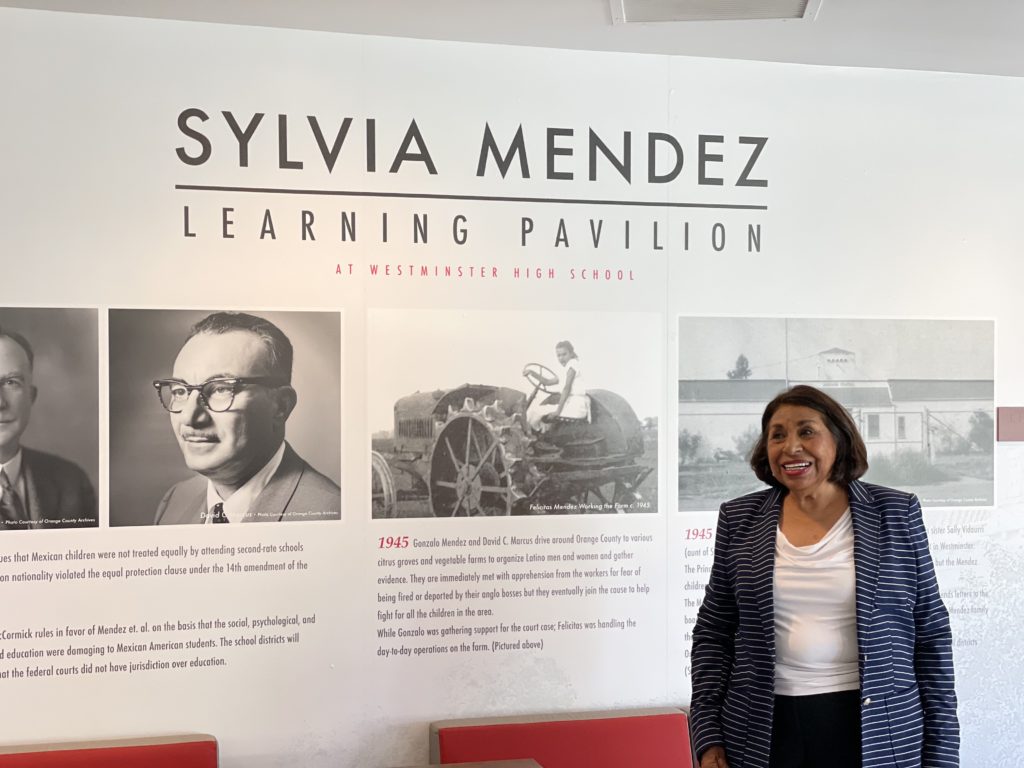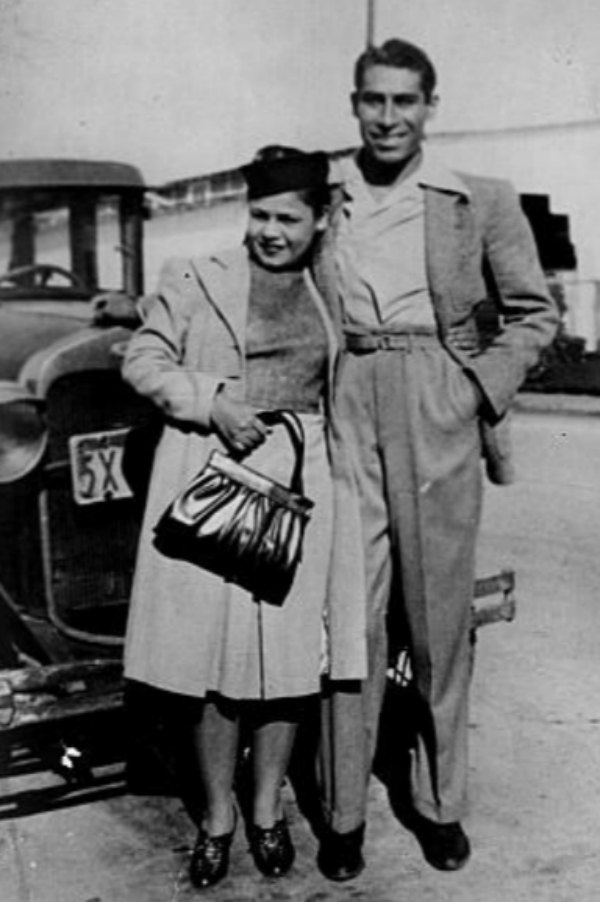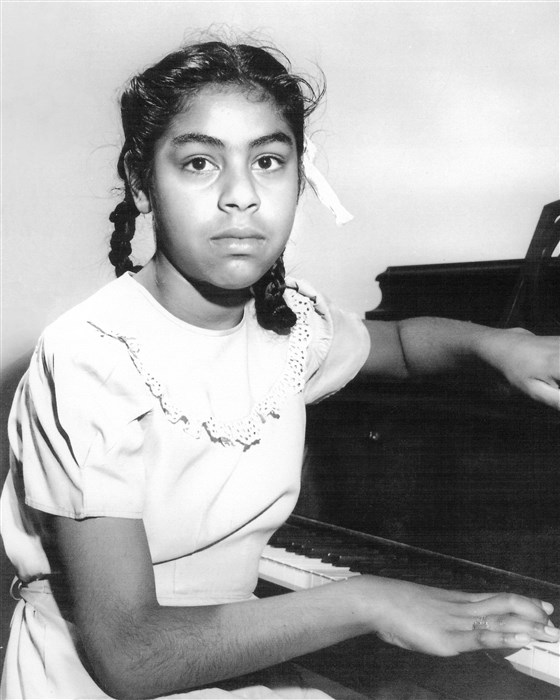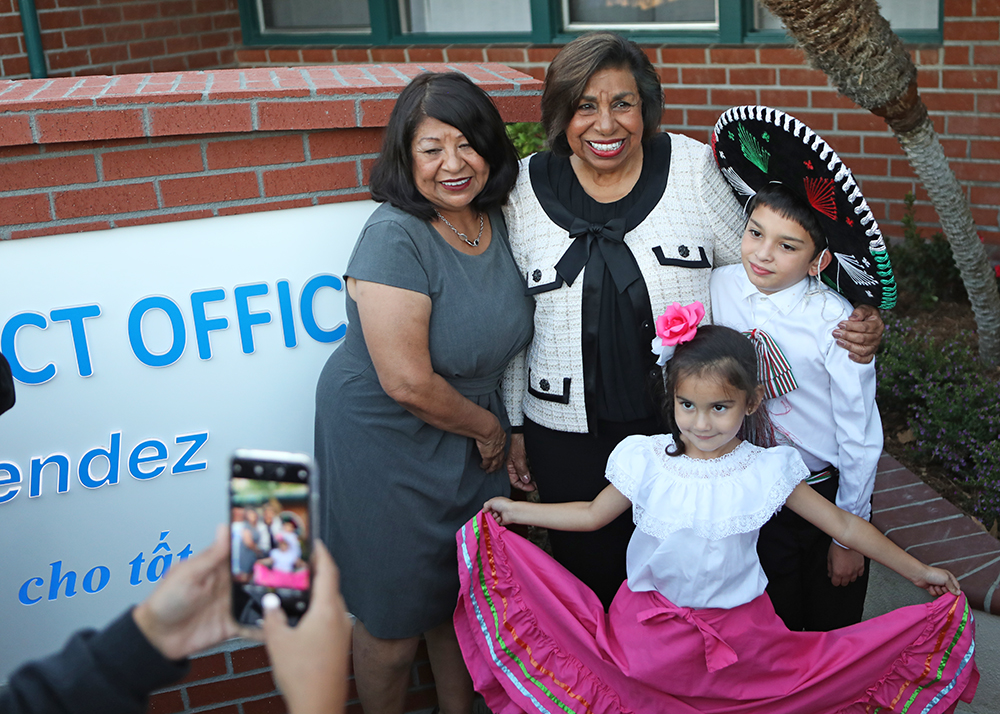
Sylvia Mendez, 85, recalls the time her late mother asked if she knew why her family went to court over the right to attend Westminster’s 17th Street School.
Sylvia, about 10 at the time, thought it was so she and her brothers could go to the campus with the beautiful playground. Her mother set the record straight.
“She says, ‘No, Sylvia. That’s not why we were fighting. We were fighting because under God we’re all equal. And you belong at that school, just like everybody else belongs at that school. And that’s what we were fighting for.'”

Today marks the 75th anniversary of the final ruling in the landmark case of Mendez v. Westminster, which struck down the legal justification for forced school segregation in California and paved the way for the U.S. Supreme Court’s landmark Brown v. Board decision.
U.S. District Court Judge Paul J. McCormick, who presided over the trial initiated by five Orange County families, ordered local school districts to end discriminatory practices against students of Mexican descent in February 1946. But that ruling was appealed to the U.S. 9th Circuit Court of Appeals.
And it was upheld there the following year — on April 14, 1947, to be exact.
“The Mendez case marks a critically important turning point not just for Orange County but for our entire nation, and its reverberations extended into all areas of society where separate-but-equal policies challenged equity for all citizens,” Orange County Superintendent of Schools Dr. Al Mijares said
“Keep in mind these were regular families who emptied their bank accounts and spent years of their lives working to ensure access for generations of students they would never meet,” Mijares said. “In that light, this anniversary is not about acknowledging a past injustice. It should be commemorated as an affirmation of our shared values and a reminder that ordinary people can do extraordinary things when they band together behind a just case and put children first.”
Raising awareness
As groundbreaking as Mendez v. Westminster was, it wasn’t widely known in the decades that followed — even in Orange County. But that began to change when Sylvia Mendez, one of the children at the heart of the civil rights case, began raising awareness at her mother’s request.
In recent years, the Mendez case has been the subject of news articles, books and documentaries, and it was commemorated with a U.S. postage stamp. In 2000, the Santa Ana Unified School District opened Gonzalo Felicitas Mendez Fundamental Intermediate School, named after Mendez’s parents. The Los Angeles Unified School District also named a high school after Gonzalo and Felicitas Mendez, who became the subject of a Google Doodle.
The family’s story traveled full circle in 2019, when the Mendez family was celebrated by the Westminster School District, which permanently changed its marquee to read “In Honor of La Familia Mendez.”
“This is such an honor for my father, Gonzalo, and mother, Felicitas Mendez,” Sylvia Mendez said at the ceremony. “My father grew up here in Westminster, and we fought the case and won it. And after it was won, nobody said, ‘Gracias, Gonzalo.’ But look at the wonderful ‘gracias’ we are getting today from this wonderful school district.”
Nearby Westminster High School also dedicated its new learning pavilion in Sylvia Mendez’s honor. And OCDE, which produced a podcast on the case in 2017, has teamed up with the City of Westminster for the creation of an interactive park and trail to recognize Mendez v. Westminster and its enduring legacy. Both public spaces are set to open this year.
17th Street School
Felicitas and Gonzalo Mendez moved to Westminster in the early 1940s to rent a 40-acre farm owned by the Munemitsu family, which had been forced to relocate to an internment camp for Japanese Americans during the second World War.
In 1943, the Mendezes sought to enroll Sylvia, then 8, and her brothers Geronimo (Jerome) and Gonzalo, Jr. at 17th Street School, one of two elementary schools in the city. Sylvia Mendez would later recall its lush lawns and “beautiful playground.” But 17th Street School only accepted White students.
“We would stop at that school every day and see those kids go in, but this playground was right next to the street, and in that playground they had monkey bars, they had a teeter-totter, they had swings, and my thing was that I always wanted to go to that school because of the playground,” Sylvia Mendez told OCDE in 2017.
It was their aunt, Soledad Vidaurri, who took the three Mendez siblings to the campus to register. Vidaurri’s children, who had lighter complexions and European surnames, would be allowed to enroll at 17th Street School, they were told by a clerk. But the Mendez children were directed to Hoover Elementary, which was designated for students of Mexican heritage.
Felicitas and Gonzalo Mendez were both American citizens, as were their children. Believing the denial was in error, they appealed to district and county officials. But their response was the same, prompting the family to hire Los Angeles attorney David Marcus, who had challenged segregation in public facilities in Riverside.
Four other Orange County families joined the legal fight through the names of their patriarchs — Lorenzo Ramirez of Orange, Frank Palomino of Garden Grove, and William Guzman and Thomas Estrada from Santa Ana.
The ensuing lawsuit, Mendez, et al v. Westminster, et al, contended that 5,000 children throughout the county were harmed by unjust discrimination policies. Under the U.S. Constitution’s 14th Amendment, they argued, equal protection meant citizens could not be treated differently based on their race.
Pursuing justice
Marcus pursued an unusual strategy in the courtroom, according to a U.S. Courts summary. He argued that segregated schools produced feelings of inferiority among Mexican-American students, jeopardizing their ability to be productive Americans. Meanwhile, testimony from the children undercut the district’s argument that a language barrier prevented the Mexican-American students from being served in traditional schools.

“I remember going (to court) every day and sitting in the front row,” Sylvia Mendez said, “and not knowing what they were fighting for. I thought they were just fighting for me to get into the White school.”
On Feb. 18, 1946, the five families won a major legal victory, with Judge McCormick ordering local school districts to cease “discriminatory practices against the pupils of Mexican descent in the public schools.”
Equal protection in the public school system, the U.S. District Court judge stated, “is not provided by furnishing in separate schools the same technical facilities, textbooks and courses of instruction to children of Mexican ancestry that are available to the other public school children regardless of their ancestry. A paramount requisite in the American system of public education is social equality. It must be open to all children by unified school association regardless of lineage.”
The ruling was upheld by the U.S. 9th Circuit Court of Appeals on April 14, 1947, exactly one day before Jackie Robinson made his major league debut with the Brooklyn Dodgers, breaking baseball’s color barrier. Two months later, California Governor Earl Warren signed a bill outlawing school segregation across the state.
A ruling reverberates
Some California schools found ways to resist the law, and sanctioned segregation continued in other states across the country. But Mendez v. Westminster established the foundation for the U.S. Supreme Court to declare in 1954 that any laws promoting segregated schools were unconstitutional. That was decided in the case of Brown v. Board of Education of Topeka, which upended the notion that racially segregated public facilities were legal as long as they were equal.

It’s worth highlighting a couple of familiar names that are linked to both cases. Civil rights lawyer Thurgood Marshall — he would go on to become the first Black U.S. Supreme Court Justice — wrote an amicus brief supporting the Mendez plaintiffs on behalf of the NAACP. He was also the lead counsel in Brown v. Board, employing similar language.
And then there’s Governor Warren, who became chief justice of the U.S. Supreme Court six years after signing the legislation banning school segregation in California. He would ultimately author the unanimous Brown v. Board decision.
Gonzalo Mendez died in 1964 at age 51. His wife, Felicitas Mendez, died in 1998, but not before imploring her daughter to tell the family’s story.
Sylvia Mendez went on to earn nursing degrees and worked for more than 30 years at the Los Angeles University of Southern California Medical Center. Since retiring as the assistant nursing director of the Pediatric Pavilion, she’s continued to speak passionately about the case and the importance of education.
For these efforts, she was invited to the White House by President George W. Bush in 2004, and in 2011 she was awarded the Presidential Medal of Freedom by Barack Obama.
“This is the history of the United States, the history of California,” she told the Los Angeles Times in 2016. “Mendez isn’t just about Mexicans. It’s about everybody coming together. If you start fighting for justice, then people of all ethnicities will become involved.”
Here’s a brief video that OCDE produced in 2018 to announce the local trail and monument park coming to Westminster.
